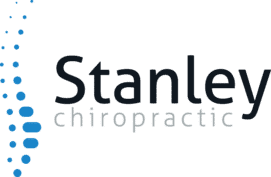
Cervical Acceleration/Deceleration Syndrome (CAD Syndrome), often referred to as whiplash, is a condition caused by a sudden, forceful back-and-forth movement of the neck, similar to the cracking of a whip. This condition typically occurs during rear-end car accidents, but it can also result from sports injuries, physical assaults, or falls.
What Happens During CAD Syndrome?
The rapid acceleration and deceleration of the neck causes…
- Overextension of the cervical spine (neck bending too far backward or forward).
- Strain or injury to the muscles, ligaments, discs, nerves, and other soft tissues in the neck.
- In severe cases, damage to the cervical vertebrae (bones in the neck).
Common Symptoms of CAD Syndrome
Symptoms may not appear immediately but can develop over hours or days. They include –
- Neck Pain & Stiffness – Most common symptom due to strained muscles and ligaments and the pain may radiate to the shoulders or upper back.
- Headaches – Often originating from the base of the skull and radiating forward.
- Reduced Range of Motion – Difficulty turning or tilting the head due to stiffness or pain.
- Dizziness – Caused by disruptions in the cervical spine or vestibular system.
- Tingling or Numbness – Nerve compression or irritation may lead to symptoms in the arms or hands.
- Fatigue – Resulting from the body’s response to the injury and healing process.
- Cognitive & Emotional Symptoms – Difficulty concentrating, memory issues, irritability, or anxiety.
Causes of CAD Syndrome
- Car Accidents – Sudden impact forces the head to whip forward and backward, stretching the neck structures.
- Sports Injuries – High-contact sports or activities like football or wrestling.
- Physical Assaults – Direct blows to the head or neck.
- Falls – Sudden jarring motions, such as falling and hitting the ground.
Diagnosis of CAD Syndrome
Someone in healthcare such as a chiropractor, physical therapist, or physician, may use…
- Physical Examination – To check for pain, stiffness, and range of motion issues.
- Imaging Tests – X-rays, MRIs, or CT scans to rule out fractures or severe soft tissue damage.
Treatment Options
Treatment aims to reduce pain, improve mobility, and promote healing. Common treatments include –
- Rest & Ice/Heat Therapy – Rest the neck initially, but avoid prolonged inactivity. Ice packs to reduce swelling and inflammation, followed by heat therapy to relax muscles.
- Pain Management – Over-the-counter pain relievers (e.g., ibuprofen) or prescribed medications for severe cases.
- Physical Therapy – Exercises to restore strength, flexibility, and range of motion; and techniques like stretching, posture training, and targeted muscle strengthening.
- Chiropractic Care – Gentle adjustments to realign the cervical spine and relieve nerve irritation, as well as soft tissue therapies like massage, are also available.
- Lifestyle Modifications – Ergonomic adjustments and avoiding activities that strain the neck.
- Alternative Therapies – Acupuncture, yoga, or mindfulness techniques for pain management and relaxation.
Most people recover from CAD Syndrome within a few weeks to months with proper treatment. However, in some cases, symptoms may persist or become chronic, requiring ongoing care.
